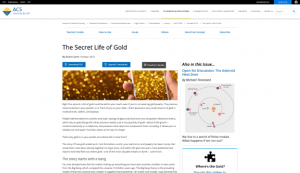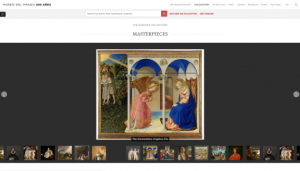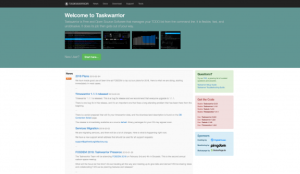 |
October 25, 2019 Volume 25, Number 43 |
General Interest |
Theme: International Artists Day |
Tech Tools |
Revisited |
In the News |
General InterestBack to Top | |
 |
|
 |
|
 |
|
 |
|
 |
|
Theme: International Artists DayBack to Top | |
 |
|
 |
|
 |
|
 |
|
 |
|
Tech ToolsBack to Top | |
 |
|
 |
|
RevisitedBack to Top | |
 |
|
In the NewsBack to Top | |
Archaeologists' Use of Lidar Leads to New Maya Discoveries | |
|
Online Map Leads Archaeologist to Maya Discovery Ancient Maya Farms Revealed by Laser Scanning Laser-scanning tech uncovers huge network of ancient Mayan farms Ancient Maya wetland fields revealed under tropical forest canopy from laser scanning and multiproxy evidence How Does LiDAR Remote Sensing Work? Light Detection and Ranging Airborne Lidar for Archaeology in Central and South America In recent weeks, two archaeological projects have been in the news for using lidar technology to aid in revealing the locations of previously unrecognized ancient Mayan structures. Lidar (from Light Detection and Ranging; also written as LiDAR) is a remote sensing technology that uses rapid laser pulses to calculate the distance between a target object and the laser's source, creating a dataset that can then be used to create extremely accurate digital maps of the Earth's surface. One study, which was led by Dr. Timothy Beach of the University of Texas at Austin and was recently published in Proceedings of the National Academies of Science (PNAS), used lidar to examine wetlands in northwestern Belize. There, lidar data gathered by a low-flying airplane combined with traditional archaeological techniques provided evidence that extent of the Mayans' agricultural activities in that area, which included numerous wetland crop fields and kilometers of canals, was substantially larger than archaeologists had previously believed. While lidar use has been growing in popularity among archaeologists, lidar data is expensive to gather or purchase. However, another archaeologist, Dr. Takeshi Inomata of the University of Arizona, recently used a free lidar map published online by Mexico's National Institute of Statistics and Geography to identify 27 Mayan sites with a unique type of construction that Inomata and his colleagues have never observed before. [JDC] Readers interested in Dr. Inomata's recent work that he conducted using a public domain lidar map will find an article on that topic from The New York Times, written by Zach Zorich and published on October 8, 2019. The next two links lead to recent articles regarding the study led by Dr. Beach on ancient Mayan agriculture. These were written respectively by Jenessa Duncombe for Eosmagazine (a publication of the American Geophysical Union) and by Denise Chow for NBC News Mach. Those interested in reading Beach et al.'s peer-reviewed study, which was published in PNAS on October 7, 2019, will find it at the fourth link. Readers curious to learn how lidar technology works should watch the eight-minute video found at the fifth link, which was created by the National Ecological Observatory Network. Finally, those interested in learning more about the use of lidar for archaeological research should visit the sixth link, which leads to an April 2019 article written by Andrew Moller and Dr. Juan C. Fernandez-Diaz for Lidar Magazine. | |





